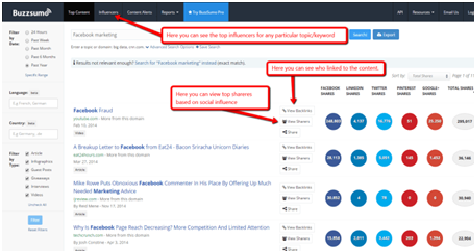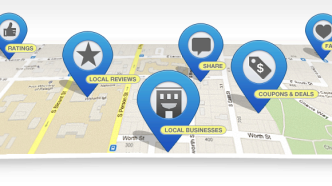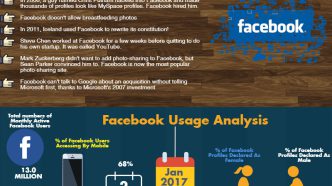Have you recently noticed a sharp decline in your Facebook organic reach? If so, you are not alone. Over the past few years, Facebook marketing has changed a lot. Long gone are the days when you could publish a Facebook post and then sit back relax, do nothing while your post automatically receives tons of engagement. With the massive amount of content posted and shared online every single day, competition in Facebook’s News Feed has increased dramatically. Owing to this, it becomes impractical to show users every post from every page they follow. That’s why, in June of last year, Facebook announced that they would be sharply dropping organic news feed impressions for brand pages, in an effort to show users “only high-quality content”. With changes to Facebook’s news feed algorithm, it has become difficult to improve organic reach on Facebook and maximize your marketing ROI. Not just this, it also gives jitter to content creators, including SME to gain exposure in News Feed. But, this doesn’t mean that you can’t reach your targeted audience anymore. Today, in this blog post, we are going to share some proven ways to DOUBLE your Facebook organic reach. Now, without further ado, let’s start discussing some proven ways to improve organic reach in Facebook’s News Feed.
#1 Create Killer Content That Resonates With Your Targeted Audience
It might sound like a cliché, but the best possible way for brands to increase their organic visibility is to consistently post quality content that your audience wants to see. Most probably, you’ve been tired of hearing the cliché “content is king”, but if you think from the user perspective, you will find that the thing that actually matters is content – especially on social networks, where the competition is stiff. Just like Google, the leading social networking giant, Facebook also puts a lot of emphasis on content quality and relevance.
When deciding which post to show in a user’s newsfeed, Facebook considers several metrics, such as likes, engagement rate, shares, comments, and clicks to determine the quality of each post. Every time users like, comment or share your post, Facebook’s algorithms learn that users are enjoying your post and want to see more of what you are posting. This will increase your organic exposure on Facebook. Generally, quality content on Facebook yields a high click-through-rate (CTR) as well as receives more likes, comments, and shares. Furthermore, Facebook also looks how many users have engaged with a particular page and how many times. So, a page with higher engagement is more likely to appear in the users’ newsfeed. That is why, it is indispensable for brands to create killer content that your audience wants to see to increases the engagement rate of their brand page on Facebook. Higher engagement can boost your reach to a great extent. However, on the other hand, when your audience loses interest, your organic visibility will start decreasing automatically.
#2 Keep an Eye on Competitors Insights
Believe it or not, but you can learn a lot by keeping an eye on competitors insight. At times, we get so involved in our brand awareness program that we miss out what our competitors are doing and what’s going on in our industry. The best thing about social media is that it is relatively easy to keep an eye on what your competitors are up to and whether their strategies are working out or not.
There are umpteen online tools available to help you gain competitor insights. Amidst them, some of the most popular are Buzzsumo, Quintly, Social Bakers, Simply Measured, and much more. Our favourite is Buzzsumo, which is designed to assist the brands to discover the top performing content for any brand, niche, keyword, or topic.
If you take a look at the above screenshot, you will get an idea of how this robust tool works. For each keyword, you can see the top performing content, social influencers, and sharers, based on a variety of metrics, including social influence (follower count, total page likes, etc.), social share, domain authority and number of backlinks. This is just one example. There are many other online tools available to check Facebook competitor’s insight. We recommend you to do an online search for “Facebook competitive analysis tools” and find the best tool that perfectly suits your needs as well as budget.
#3 Publish On Right Time to Bring More Engagement
Timing of publishing post on Facebook is something that you need to seriously consider because posts published at the right time are more likely to bring higher engagement. The best way to discover the right time to publish post on Facebook is to look at your INSIGHTS and experiment with a trial and error method. We used buffer tool to manage our posts and schedule them to go live during morning hours and found that posts published on Thursday, Friday, and Sunday get more engagement and interaction. On Thursday, and Friday, the engagement rate was dropped by 3.5% as compared to Monday and Wednesday. While the best time to post on Facebook is 9am on Sunday, 1pm on Thursday, and 3pm on Saturday.
This may vary depending on your demographics, niche, audience, and desired goals. These are not the popular timings to go live; in fact these are timings when the engagement rate is much higher as compared to other timings of the day. Obviously, you want to go live when the engagement rate is higher to grab the maximum attention.
#4 Use Facebook Insights to Know Your Audience Behavior
The more you know about your audience, the better it would be for you to gain traction. Just like Google Analytics, Facebook also has an analytics tool called as ‘Facebook Insights’ that provides a variety of different data metrics to the page admins or owners to measure the performance of their content. For now, Facebook Insights is broken down into 5 different tabs: Likes, Reach, Visits, Posts, and People.
Likes: It shows the total number of users who have shown interest in your page by liking it within a specific time period. Also, it shows from where the likes come i.e. mobile, desktop, etc. Furthermore, in this part, you can also see a breakdown of paid vs. organic likes, and the number of users who have “unliked” your page.
Reach: This is yet another crucial metric because it shows you how many people have reached to your posts and seen it. Here, you can also see +ve engagement metrics, such as shares, likes, and comments as well.
Visits: This shows you a complete breakdown of which pages (tabs) were visited by the users (i.e. timeline, likes tab, custom tabs, etc.) and which external website brought users to your Facebook page.
Posts: This analyzes your content based on the engagement, targeting, total reach, post type, and time of day.
People: This shows you the location of where your followers are. Here, you can see things like location, language, gender, and compare the engagement as people reached vs people engaged.
#5 Interact With Your Audience and Show People You’re Listening To Them
The very first thing you need to keep in mind is that people don’t use Facebook to buy any products and services; instead they use it to be social and engage with other people. Don’t forget that for brands, social media is all about building a community of real people and providing them value. So, what you need to do is make your audience feel heard and valued. Show them that you are listening to them and interested in interacting with them. Once your audience know you’re listening to them and how responsive you are, they will be more likely to visit your Facebook page and even tell their friends about your page.
Hope you find this post helpful. For any query related to this post, you can comment down below. Thanks for your time!



